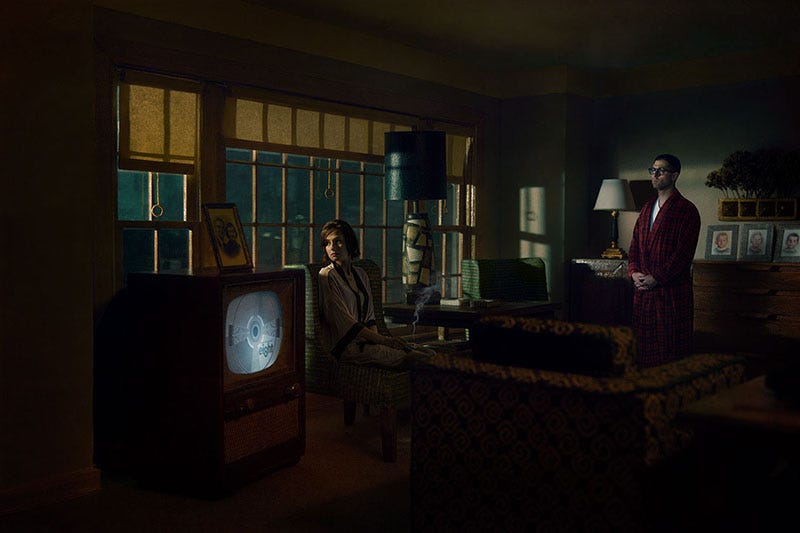The Case for Melancholy
Back in the 1990s I was a super-busy freelance photo-illustrator. The assignments were plentiful, the budgets were large, and the skies were not cloudy all day. Heady times, indeed! One request I would hear repeatedly from potential clients was, “we love your work, but can you make it brighter?”
“uh, well…”
At the time, I was young, eager to please, and doing my best to support a young family. So I would try to “cheer things up a bit” with the images, as it were, and these were the times I would usually either fall on my face, and/or absolutely cringe at the results.
As is obvious to anyone who has followed my work, I have always made what can only be described as “melancholic” images. And even back then, this tendency was perfect for certain assignments. There were many art directors who wisely, did not (however gently) cajole me to “make it brighter”. I made lots of images for magazine articles and book covers about subjects like The Civil War, the Depression, the Holocaust, and mental illness.
Above is a 2010 photo-illustration for a magazine story about PTSD in returning vets
Not surprisingly, this same moody aesthetic runs through all of my fine art photography from more recent years. The title of a mini-retrospective of my work a while back was Beautiful, Terrible Things. I can’t take credit for the wording, a magazine writer came up with the phrase after I shared a favorite quote with him:
“I like beautiful melodies telling me terrible things”
TOM WAITS
The “beautiful” part is just as important for me as the “terrible” part. So what I’m really after is a taste of bittersweetness. Speaking of, author Susan Cain not long ago turned this topic into a whole book: Bittersweet: How Sorrow and Longing Make Us Whole.
As you can tell, this subject endlessly fascinates me, and merits a longer discussion. Can you relate to this? Continue the conversation and send an email to me at rt@richardtuschman.com, I would love to hear from you.
Related reading:
The Reason People Listen to Sad Songs
By Oliver Whang, The New York Times, May 19, 2023
https://www.nytimes.com/2023/05/19/science/behavior-music-sadness.html
(I'm hoping you can read this without a NYT subscription)
“Melancholy…is a noble species of sadness that arises when we are properly open to the idea that suffering and disappointment are at the heart of human experience…
The wisdom of the melancholy attitude (as opposed to the bitter or angry one) lies in understanding that our suffering belongs to humanity in general…
The task of culture is to turn rage and forced jollity into melancholy. The more melancholy a culture can be, the less its individual members need to be persecuted by their own failures, lost illusions, and regrets.”
Alain de Botton, In Praise of Melancholy
from The School of Life: An Emotional Education
“You think your pain and your heartbreak are unprecedented in the history of the world, but then you read. It was Dostoevsky and Dickens who taught me that the things that tormented me most were the very things that connected me with all the people who were alive, or whoever had been alive. Only if we face these open wounds in ourselves can we understand them in other people.”
JAMES BALDWIN
Television Test Pattern 2016-2019






